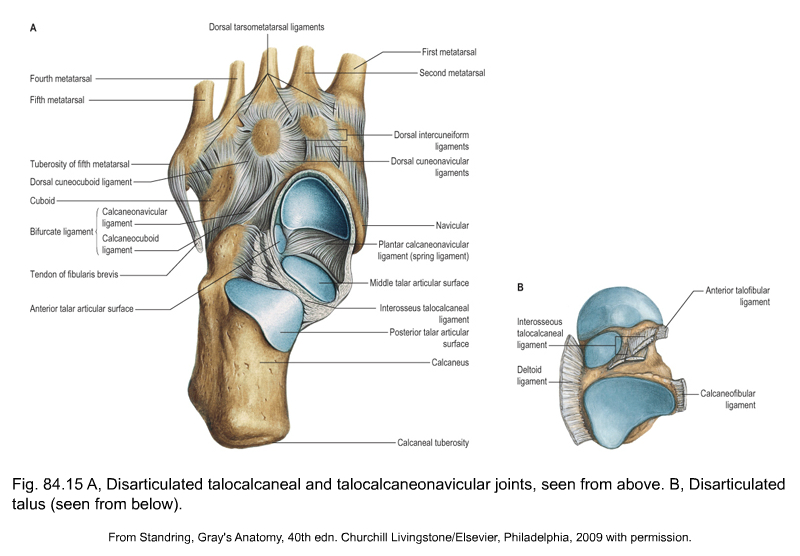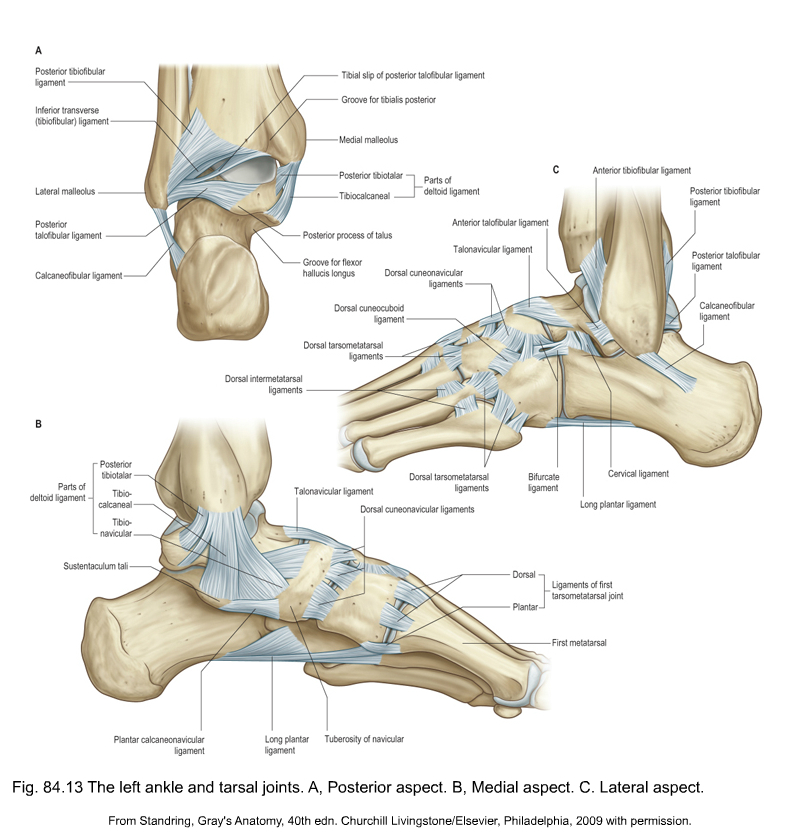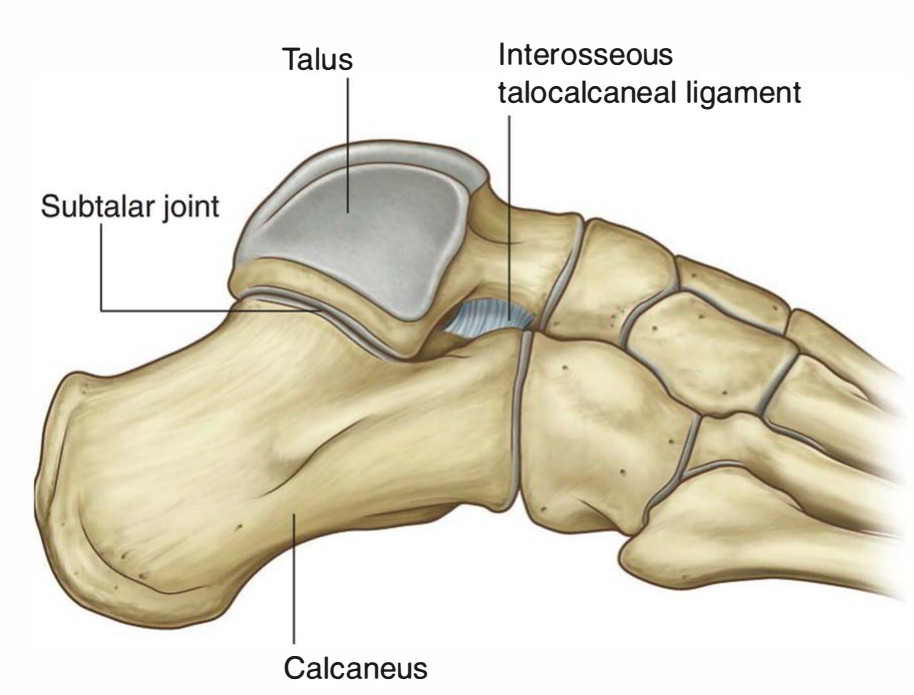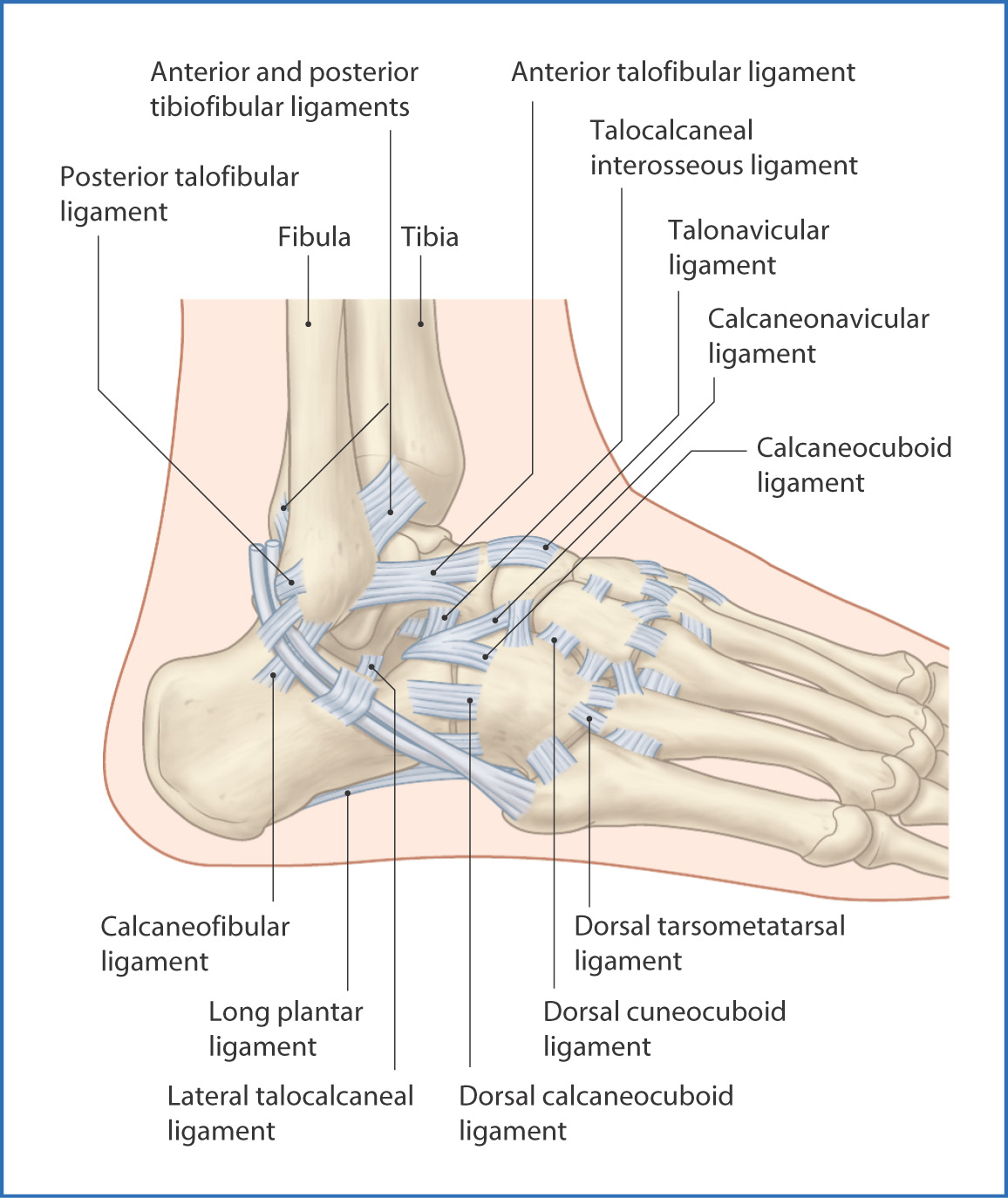
Anatomy & Physiology Illustration
The interosseous talocalcaneal ligament (ITCL) is the main soft-tissue contributor to subtalar joint stability. The role of ITCL reconstruction in retaining this stability is minimally reported. Therefore, we conducted this study to investigate the effects of rupture and reconstruction of the ITCL on the subtalar and peritalar joints.

Kinesiology Of Ankle And Foot
The lateral ligaments, deep deltoid ligaments, talonavicular joint capsule, and the talocalcaneal interosseous ligament (TCIL) were sequentially released and underwent cycles in midstance and heel-raise positions after each release. The talus was removed and replaced to simulate total talar implant. Lastly, TA, EHL, and EDL were sutured into.

anatomy of the lower leg, ankle and foot Musculoskeletal Key
The interosseous talocalcaneal ligament forms the chief bond of union between the talus and calcaneus . It is a portion of the united capsules of the talocalcaneonavicular and the talocalcaneal joints, and consists of two partially united layers of fibers, one belonging to the former and the other to the latter joint.

The interosseous talocalcaneal ligament. a Posterior view specimen with... Download Scientific
The interosseous talocalcaneal ligament, or ligament of the tarsal canal, is medially located in the tarsal canal. The ITCL blends with the fibers of the medial root of the inferior extensor retinaculum at the origin of the calcaneus, which forms a V-shape. The ITCL has a length of 10 mm and a width of 8.5 mm.

Interosseous Talocalcaneal ligament Nursing School Info, Nursing Study, Body Health, Health
Its stability resides in the configuration of the anterior and posterior subtalar joint surfaces as well as several ligamentous structures (Fig. 1) [6, 25, 27]: the inferior extensor retinaculum (IER), the calcaneo-fibular ligament (CFL), the cervical ligament (CL) and finally the inter-talocalcaneal ligament (ITCL), which comprises an anterior and a posterior fascicle that rotate over each.

Structure of interosseous talocalcaneal ligament Semantic Scholar
The interosseous talocalcaneal ligament and the medial component of the extensor retinaculum root form a V-shape in the tarsal sinus and canal. Function. The talocalcaneal interosseous ligament controls the talus in the movements of eversion and inversion by maintaining apposition of the talus and calcaneus. The function of the cervical.

(A) T1weighted MRI scan with a coronal view showing rupture of... Download Scientific Diagram
This part (also known as the "true" joint capsule) forms the strong talocalcaneal interosseous ligament, together with the anterior part of the talocalcaneal joint capsule. The joint capsule is lined with the synovial membrane which helps to lubricate the joint to facilitate movements of the bones.

Joints of the Lower Limb Ankle and Subtalar Joints Anatomy
The main ligament that attaches these bones is called the interosseous talocalcaneal ligament, which runs along a groove between them. Four other weaker ligaments provide the joint with added stability. In between the calcaneus and talus is the synovial membrane. This tissue secretes fluid to lubricate the joint space, protecting the cartilage.

The interosseous talocalcaneal ligament. a Posterior view specimen with... Download Scientific
Background: Injury of the interosseous talocalcaneal ligament (ITCL) has been recognized as a cause of subtalar instability, though lack of an accepted clinical test has limited the ability of clinicians to reliably make the diagnosis. Clinical effects of ITCL failure remain unclear because of insufficient understanding of the role of the ligament.

Structure of interosseous talocalcaneal ligament Semantic Scholar
The interosseous talocalcaneal ligament is composed of two short and broad fibrous bands located in the tarsal sinus. The deep extension of the inferior extensor retinaculum is situated between these bands of the interosseous ligament. Occupying the central position between the talocalcaneal and talocalcaneonavicular joints, this ligament is.

Anatomy Of The Ankle
The interosseous talocalcaneal ligament forms the chief bond of union between the bones. It is, in fact, a portion of the united capsules of the talocalcaneonavicular and the talocalcaneal joints, and consists of two partially united layers of fibers, one belonging to the former and the other to the latter joint. It is attached,above, to the groove between the articular facets of the under.

anatomy of the lower leg, ankle and foot Musculoskeletal Key
Background: Injury of the interosseous talocalcaneal ligament (ITCL) has been recognized as a cause of subtalar instability, though lack of an accepted clinical test has limited the ability of clinicians to reliably make the diagnosis.Clinical effects of ITCL failure remain unclear because of insufficient understanding of the role of the ligament.

Talocalcaneal Ligament Earth's Lab
5 Interosseous talocalcaneal ligament 6 Cervical talocalcaneal ligament Akiyama suggested that the sinus tarsi is not only a talocalcaneal joint space but a source of nociceptive and proprioceptive information on the movement of the foot and ankle and that sinus tarsi syndrome may result from disorders of nociception and proprioception in the foot.
Interosseous talocalcaneal ligament. (a) Schematic drawing of a coronal... Download Scientific
The talocalcaneal interosseous ligament is the main stabilizer of the subtalar joint. It occupies a central position between the subtalar and talocalcaneonavicular joints and lies directly below the long axis of the leg, thus acting as the fulcrum around which the leg and foot moves. This subjects the talocalcaneal interosseous ligament to.

Ankle and Foot Joints Basicmedical Key
Interosseous Talocalcaneal Ligament - It takes an inferolateral course from the sulcus of the talus to the sulcus of the calcaneus. This ligament is a bilaminar, broad and flat transverse band that is associated with both the talocalcaneal and talocalcaneonavicular joints .

Anatomy Of The Right Foot
Subtalar joint instability is an entity commonly neglected within the scope of lateral ankle instability in patients of all ages; up to 25% of chronic ankle instabilities have associated subtalar instability [2, 24, 30], which could account for some of the cases with persistent symptoms after isolated repair or reconstruction of the anterior talo-fibular ligament [].